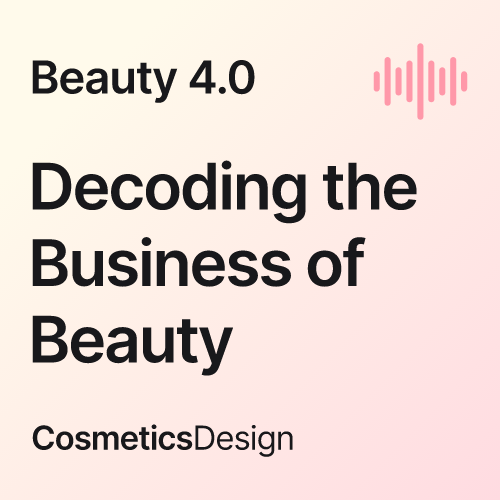The big PCR problem: 90% of sustainable beauty packaging commitments will not be met by 2025 – expert
![[Getty Images]](/var/wrbm_gb_food_pharma/storage/images/_aliases/wrbm_large/publications/cosmetics/cosmeticsdesign-asia.com/headlines/packaging-design/why-90-of-sustainable-beauty-packaging-commitments-will-not-be-met-by-2025/15371493-1-eng-GB/Why-90-of-sustainable-beauty-packaging-commitments-will-not-be-met-by-2025.jpg)
RePurpose Global is a plastic action platform that acts as a private industry partner to address the end of the plastic recycling supply chain and works with brands to become plastic neutral
CEO and co-founder Svanika Balasubramanian, recently spoke at CosmeticsDesign’s Circular Beauty – From Concept to Reality webinar last week (Now available to watch on-demand).
During the event, Balasubramanian raised doubts about the many sustainable packaging commitments that have been made by companies in recent years.
“Lately, we’ve been seeing all of the commitments being made by brands. They say they are going to use 100% post-consumer recycled (PCR) [materials] or they are going to be 100% plastic free by 2025. And then they come to us and say they’ve made the commitment but have no idea how to reach it.
“The reality is that 90%, and this is an astonishing number, of sustainable packaging commitments will not be met by 2025. And a big portion of that actually rests on these kind of PCR commitments that are being made. And the reason for that is the lack of good infrastructure on the other end to recycle a lot of these materials.”
She added that the beauty industry does not have a good idea of what circularity truly entails.
“Do we even understand what circularity means? Do we have a good handle as an industry within the beauty sector and all of the intricacies that go into that word, circularity? And I think there's a long answer to it, but my short answer is not really.”
She continued: “I think we don't yet completely understand what it takes to create 100% circularity across the entire comprehensive value chain for our products.”
Furthermore, there are also misconceptions about recycling packaging, she said.
“People misuse the word recycling. They put something into the recycling bin, and they say they have recycled – but that’s not true, there’s so many things that can go wrong after that and its absolutely does not guarantee that the product will get recycled.”
Despite the many pitfalls, Balasubramanian insists that she is optimistic about the reality of circular beauty.
“Rome wasn’t built in a day and even five to six years ago people in the beauty industry weren’t even sure if any of this was possible. When you talk to them, there’d be a lot of pushback. But now we have these excellent entrepreneurs… that have gone out and proven that it can be done.”
Building from the bottom up
To tackle the lack of good infrastructure, RePurpose focuses on “building the right kind of infrastructure needed in specific localities”.
“In India at the moment, PET already gets recovered and recycled – between 60% to 70% – because there’s a thriving informal sector. So, there’s not that much need for building a PET recycling centre and we focus on lower order materials like polypropylene, LDPE, and also a lot of the unrecyclable content,” said Balasubramanian.
“There’s a difference with our project in Ghana, where PET recycling rate itself is less than 5%, so it makes sense to start with PET and work your way into those other materials. There’s a lot of thought that needs to go into it and I like to think of the work that we do in building this infrastructure on the ground as very rigorous impact bang for buck calculation.”

![The beauty industry has been too focused on recycling and needs to shift focus on reuse and refill solutions. [Emma Lewisham]](/var/wrbm_gb_food_pharma/storage/images/_aliases/wrbm_medium/publications/cosmetics/cosmeticsdesign-asia.com/headlines/packaging-design/emma-lewisham-and-bhuman-urge-beauty-industry-needs-to-focus-on-reuse-and-refill-packaging/15390562-1-eng-GB/Emma-Lewisham-and-Bhuman-urge-beauty-industry-needs-to-focus-on-reuse-and-refill-packaging.jpg)
![[Getty Images]](/var/wrbm_gb_food_pharma/storage/images/_aliases/wrbm_medium/publications/cosmetics/cosmeticsdesign-asia.com/headlines/brand-innovation/eco-boost-five-recent-developments-in-sustainable-beauty-across-apac3/15399529-1-eng-GB/Eco-boost-Five-recent-developments-in-sustainable-beauty-across-APAC.jpg)
![A raft of industry players are joining the circular beauty movement, but how can the sector encourage consumers to adopt circularity en masse? [Getty Images]](/var/wrbm_gb_food_pharma/storage/images/_aliases/wrbm_medium/publications/cosmetics/cosmeticsdesign-asia.com/headlines/market-trends/circular-beauty-webinar-with-bhuman-emma-lewisham-repurpose-global-and-pa-consulting/15346419-1-eng-GB/Circular-Beauty-Webinar-with-Bhuman-Emma-Lewisham-rePurpose-Global-and-PA-Consulting.jpg)

![Indus Valley is working to corner 30% of India's online premium boxed hair colour market. [Indus Valley]](/var/wrbm_gb_food_pharma/storage/images/_aliases/wrbm_tiny/publications/cosmetics/cosmeticsdesign-asia.com/article/2024/07/26/indus-valley-aims-to-secure-30-of-india-s-online-premium-hair-colour-market-with-organic-offerings/17594932-5-eng-GB/Indus-Valley-aims-to-secure-30-of-India-s-online-premium-hair-colour-market-with-organic-offerings.jpg)
![[Getty Images]](/var/wrbm_gb_food_pharma/storage/images/_aliases/wrbm_tiny/publications/cosmetics/cosmeticsdesign-asia.com/china/china-focus-latest-developments-in-china-s-booming-beauty-market25/17606695-1-eng-GB/China-focus-Latest-developments-in-China-s-booming-beauty-market.jpg)
![Kosé has launched makeup brand Visée in Singapore as part of plans to reinforce its position in SEA. [Visée]](/var/wrbm_gb_food_pharma/storage/images/_aliases/wrbm_tiny/publications/cosmetics/cosmeticsdesign-asia.com/headlines/business-financial/visee-singapore-kose-aims-to-enhance-brand-visibility-in-sea-with-new-launch/17587264-1-eng-GB/Visee-Singapore-Kose-aims-to-enhance-brand-visibility-in-SEA-with-new-launch.jpg)
![ble C&C is set on reinforcing its competitiveness in China’s beauty market. [Missha]](/var/wrbm_gb_food_pharma/storage/images/_aliases/wrbm_tiny/publications/cosmetics/cosmeticsdesign-asia.com/headlines/business-financial/able-c-c-aims-to-strengthen-competitiveness-in-china-through-online-expansion-kol-collabs/17591626-1-eng-GB/Able-C-C-aims-to-strengthen-competitiveness-in-China-through-online-expansion-KOL-collabs.jpg)

![LG H&H genetic study says 23 genetic regions affect natural skin tone. [Getty Images]](/var/wrbm_gb_food_pharma/storage/images/_aliases/wrbm_tiny/publications/cosmetics/cosmeticsdesign-asia.com/article/2024/07/23/lg-h-h-discovery-of-genetic-skin-tone-factors-in-east-asians-potentially-key-to-skin-radiance-developments/17587210-1-eng-GB/LG-H-H-discovery-of-genetic-skin-tone-factors-in-East-Asians-potentially-key-to-skin-radiance-developments.jpg)

![DR.CI:LABO expects brand-supplier partnerships gain more public prominence as consumers interest in skin care grows online. [Dr.Ci:Labo]](/var/wrbm_gb_food_pharma/storage/images/_aliases/wrbm_tiny/publications/cosmetics/cosmeticsdesign-asia.com/article/2024/07/22/brand-supplier-partnerships-will-come-to-the-fore-amid-the-online-skin-care-landscape-dr.ci-labo/17576755-1-eng-GB/Brand-supplier-partnerships-will-come-to-the-fore-amid-the-online-skin-care-landscape-DR.CI-LABO.png)


